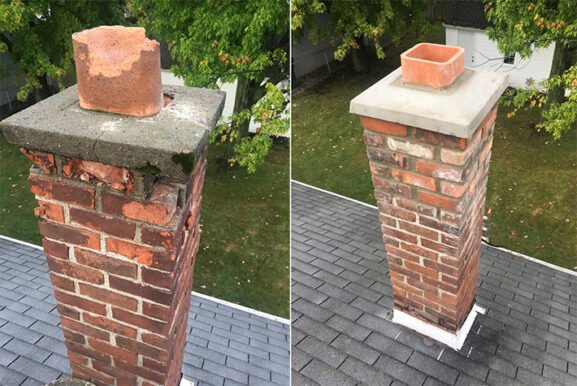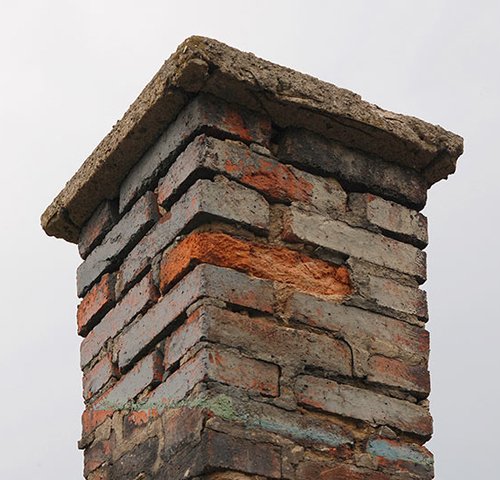Understanding Chimney Masonry Repair Cost and What Affects It
Key Takeaways
- Chimney masonry repair costs vary widely based on the extent of damage, materials needed, and labor involved
- Regular inspections help catch early signs of masonry wear, which can save you money in the long run
- Regional factors like climate and local labor rates significantly affect the final price of repairs
- Investing in quality materials and experienced professionals can extend the life of your chimney structure
What Chimney Masonry Repair Really Involves
Masonry repair for chimneys typically means addressing damage to the brick, stone, or mortar structure of the chimney. This isn’t just about aesthetics—it’s about preserving structural integrity and preventing water intrusion. Over time, exposure to moisture, fluctuating temperatures, and settling foundations can cause bricks to crack or mortar to erode.
Unlike simple chimney cleanings or cap replacements, masonry repair can range from basic tuckpointing to full rebuilds. That range is what makes the cost so variable and often surprising for homeowners.
Average Cost Range for Chimney Masonry Repair
Most homeowners can expect to pay anywhere from $300 to over $4,000 depending on the type and scope of the repair. Small-scale tuckpointing might cost a few hundred dollars, while large repairs involving scaffolding or chimney crown rebuilding could stretch into the thousands.
Here’s a general breakdown of average pricing for common masonry repair tasks:
- Tuckpointing: $10 to $25 per square foot
- Crown repair or replacement: $500 to $2,000
- Brick replacement: $20 to $30 per brick
- Full rebuild (above the roofline): $1,500 to $4,000+
Keep in mind that these are just ballpark figures. Your local market, chimney height, accessibility, and materials used all play major roles in determining the actual price.
Factors That Drive Repair Costs Up or Down
Extent of Damage
Chimneys with minor mortar cracking cost far less to repair than ones with structural brick failure or leaning stacks. A professional inspection is key to identifying whether you’re dealing with cosmetic wear or something that threatens your home’s safety.
Height and Accessibility
If your chimney is tall or hard to reach, labor costs increase due to the need for scaffolding or safety gear. Roof pitch can also affect the complexity of the job.
Materials Used
Not all brick or stone is created equal. Matching your existing materials—especially in older homes—can come at a premium. Additionally, waterproofing agents, high-grade mortar, or custom masonry caps can all increase costs.
Regional Labor Rates
Prices differ widely based on where you live. For example, repair costs in New York and New Jersey tend to be higher than in rural areas due to elevated labor rates and stricter building codes. This CostHelper article provides some useful national estimates and insights.
Why Regular Maintenance Can Save You Money
Skipping regular chimney inspections often leads to more expensive problems later. What might start as a few hairline cracks in the mortar can lead to major brick displacement, internal water leaks, and even full chimney collapse.
Masonry is especially vulnerable to freeze-thaw cycles. When moisture enters the cracks and freezes, it expands, pushing the materials apart. Annual inspections and preventive maintenance—like sealing and minor repointing—can catch these issues early, avoiding major overhauls.
How to Choose a Masonry Repair Specialist
Hiring the right professional can mean the difference between a long-lasting repair and a quick patch job that fails within a season. Look for contractors who:
- Specialize in chimney masonry
- Provide detailed written estimates
- Are licensed and insured in your state
- Offer photo documentation of damage and repair
- Can match the existing masonry type and color
Online reviews and local recommendations can help narrow down your options. Always ask for references and compare quotes—not just for cost but also for thoroughness of the proposed solution.
Permits and Code Compliance Considerations
In some areas, masonry work—especially rebuilds—requires permits and must comply with specific codes. This is especially true in densely populated regions or historical districts. Be sure your contractor is aware of and responsible for securing any needed permits. Ignoring this step could lead to fines or having to redo work that’s not up to code.
The Hidden Risks of Delaying Chimney Repairs
Putting off masonry repair might seem like a cost-saving decision in the short term, but it can create hidden risks. Crumbling mortar and bricks allow moisture into the structure, which can rot surrounding wood, damage drywall, or even impact your home’s foundation.
In extreme cases, structural chimney failure can lead to collapse—a serious hazard that threatens both property and personal safety. Insurance may not cover damage resulting from negligence or deferred maintenance, so waiting too long could come with bigger financial consequences than the repair itself.
When Repair Becomes Restoration
Sometimes, especially in older or historic homes, chimney repair becomes a matter of restoration. That means preserving architectural detail while upgrading the structure to meet current safety standards.
Restoration jobs typically cost more due to the need for skilled craftsmanship and materials that match historic aesthetics. But the investment not only keeps your home safe—it also maintains its value and character. If your chimney is part of a heritage property, restoration may be your only option to stay compliant with local preservation laws.
Making an Informed Budget for Long-Term Results
Instead of focusing only on the lowest upfront cost, think of chimney masonry repair as an investment in your home’s structural resilience. Opting for temporary fixes might lower your initial expense but often leads to recurring problems.
Discuss long-term maintenance plans with your contractor. Ask about warranties, seasonal inspections, and protective measures like waterproofing sealants. These preventive steps can extend the life of your masonry and reduce the chance of needing costly repairs again.
By staying proactive, working with qualified professionals, and budgeting realistically, you’ll ensure your chimney remains both functional and safe for years to come.

